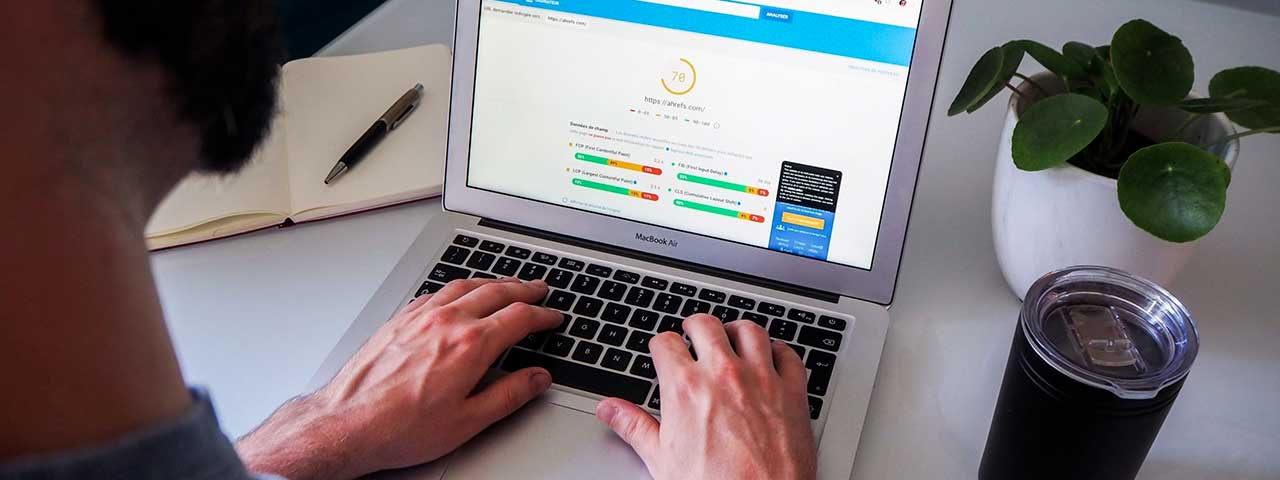9 Simple Ways to Improve Google PageSpeed on WordPress

Nobody Likes a Slow Website
A few years ago, a Microsoft study stated that a goldfish had a longer attention span than a human. While that is not true, the fact remains that humans are not very patient as a species. And that especially applies to website visitors. Recent studies have shown that you only have a few seconds before visitors abandon your site to favor your competitor.
With today’s users more impatient than ever and increasing digital competition, it’s vital to have a fast-loading WordPress website if you want to be successful. If your site doesn’t load fast enough, your visitors may decide to leave instead of waiting to view your pages.
But how can website owners improve Google PageSpeed on WordPress?
Read on, and we’ll explain how to check your site’s Google PageSpeed score and make nine simple but effective changes to improve Google page speed on WordPress.

Why Improve Google PageSpeed?
Let’s start with a fundamental question. How fast is your WordPress website? If your website loads in less than three seconds, you are ahead of the curve. And if your page speed is less than one second, you are amazing!
Perhaps you only need to make a few minor tweaks to get your WordPress site up to speed. This post provides you with simple solutions that even non-techies can implement on their WordPress site. If you need more extensive help, scroll down to the end of this post.
But first, let me answer two essential questions that many of you may have.

What is Google PageSpeed?
Google PageSpeed is a set of free tools which evaluate how quickly your website loads. It also provides your website speed scores of up to 100 for both mobile and desktop.
You should aim for a score of 90 or above. A score under 50 is officially slow and needs urgent improvement. Luckily, we’ve got lots of recommendations to boost your WordPress site speed below.
You can check your website’s performance by going to the Google PageSpeed Insights page and simply typing in your URL. It’s worth checking your Google PageSpeed scores regularly and trying to improve them over time.
You can also check your page speed with tools like GTMetrix and Pingdom. Each of them provides you with insights and data regarding your page speed, which helps you identify and remove any bottlenecks.

Why is Google PageSpeed Important?
Often WordPress beginners think that if their website loads rapidly for them, then it must be fast. However, because of caching, browser location, and various other factors, your site often loads more quickly for you than for other users.
Having a quick WordPress website is vital in today’s fast-paced digital world. Users are generally impatient and will exit sites that take too long to load. If your site is slow, you could be losing a lot of website traffic.
Page speed also affects how users interact with and engage on your site. Ultimately, faster sites get more sales, sign-ups, donations, and other conversions – so improving your site speed could improve your bottom line.
Finally, page speed is a search engine ranking factor. The more quickly your site loads, particularly on mobile, the higher it will be displayed on search engine results pages.
Faster site = more traffic + more engagement

How to Improve WordPress PageSpeed
Here are our top recommendations to improve your Google PageSpeed score on WordPress without having to be a WordPress expert or web developer. All you need is admin access to your WordPress site and an hour of your time.
1. Use a Lightweight WordPress Theme
A WordPress theme is a website’s foundation. So, it naturally affects how your website performs in the long run. That’s why it’s wise to choose a theme optimized for speed.
A lightweight theme means it has a small file size and sends fewer server requests while loading, decreasing the load time significantly. The theme isn’t bloated with unnecessary code responsible for slow-loading pages either.
Speed is a decisive factor in creating a smooth user experience and can massively impact your conversions. A fast-loading website is also a must if you want to rank highly in Google. Luckily, many lightweight WordPress themes can help you achieve your goals.
2. Invest in Fast WordPress Hosting
Beware of cheap website hosting!
A shared host might seem like a bargain (“Unlimited page views!”). However, it comes at another cost: incredibly slow site speed and frequent downtime during high traffic periods.
Often overlooked, WordPress hosting is one of the critical components of every successful website. Choosing the best WordPress hosting for your needs can improve your SEO and increase sales. Various WordPress hosting options are available, including Free, Shared, VPS, Dedicated, and managed WordPress hosting.
One website host we use and recommend is Cloudways. But you may also like WPEngine or Kinsta as your hosting solution.
3. Think Mobile-First
As Google mainly uses the mobile version of websites in its rankings, it’s crucial to think mobile-first to design and optimize your site’s speed.
The easiest way to ensure fast mobile loading is with a responsive WordPress theme. Responsive themes will ensure your site is adapted and displayed in the best possible way on smaller screens.
In addition, several plugins are great for optimizing your WordPress site’s mobile speed. We use and recommend the premium WP Rocket plugin on the PixoLabo site.
The AMP plugin (formerly WordPress AMP) also boosts mobile page speed. It creates AMP versions of your web pages which load instantly on mobile and other devices. But with recent changes in how Google views AMP, we recommend focusing on Google’s Core Web Vitals instead.
4. Optimize Your Images
Large images are the most common cause of slow WordPress sites. The larger the picture files on your website, the longer your site takes to load.
Optimizing your images is, therefore, a vital step to improve your website speed. Optimizing involves resizing and compressing image files so that they can be retrieved and loaded more quickly.
Good image optimization involves two stages. First, make sure to edit your image before uploading it to your site. We recommend (and use) Adobe Photoshop to optimize our images. While the optimum image size depends on the type of image and how you plan to use it, we recommend you start with 50% image compression. Another image optimization factor is the file type; generally, JPEG files are smaller than PNG files.
Second, install an image optimization plugin on your website. We recommend Smush (which we use on many of our client sites) or Imagify (which we use on the PixoLabo site.) These plugins not only compress images further after they are uploaded, thus boosting page speed. But they also have various other image optimization features, including lazy loading and serving images in the new WebP format.
5. Enable Caching
By enabling caching on your website, you can store your site data locally in temporary storage spaces, called caches. Caching means that browsers can load your site files more quickly and don’t have to re-download everything from your server every time your site is needed.
Caching thus makes your page loading speeds much faster, especially when people return to your site for a second or third time. Moreover, it’s super-easy to enable on WordPress with a free plugin such as W3 Total Cache.
There are other options for those who want or need more control over your page speed optimization, including Autoptimize and WP Rocket.
Before you enable caching on your WordPress site, be sure to check if your website host has caching enabled as part of the hosting service. For best results, only one caching plugin should be active.
6. Enable GZIP Compression
With GZIP compression, your website files transfer between your server and users’ browsers in lightweight compressed versions. Compression makes the process in which browsers retrieve and load your website much faster.
We recommend installing the WP-Optimize plugin, which has a GZIP compression option. This plugin will also be helpful for our next point when we come to minifying website files.
7. Minify CSS, HTML & JS Files
If your Google PageSpeed score needs improving, minifying Cascading Style Sheet (CSS), HTML, and JavaScript (JS) files will undoubtedly be a recommendation.
CSS, HTML, and JS files add comments to your website code, for example, to clarify formatting or style. Minification sounds complicated, but it simply means reducing the size of these files and deleting unnecessary code.
Doing this is hugely beneficial as it will enable your site to load more rapidly while retaining the critical information needed for your site to display correctly. In addition, you can minify your JS, HTML, and CSS files on WordPress quickly and easily with the free Autoptimize or WP Fastest Cache plugins.
8. Update Your Plugins
Plugins may be reducing your site speed in various ways. For example, poorly designed plugins, outdated software, or surplus/duplicate plugins can slow website loading.
It’s worth remembering that it’s not the number of plugins that usually cause a page speed problem. (That is unless you have lots of plugins that do the same thing or are not used – in which case you should delete the surplus ones.) In general, it’s the quality and usefulness of plugins that affect page speed.
It’s a good idea to run a Google PageSpeed test both before and after installing any plugin. This test will show the impact of the plugin on your site’s speed, so you can make an informed decision about whether the plugin’s functionality is worth any site slowing.
You can also check how your current plugins affect your site speed by deactivating each one in turn in the ‘Plugins’ section of your WordPress website back-end and then running a PageSpeed test.
You should also make sure to update plugins as and when new software becomes available. Updates show up on your WordPress dashboard. Check regularly and click on any update messages to action them.
9. Clean-Up Your Database
Finally, you can speed up your WordPress website with a good old spring clean!
The more you use your WordPress site, the more your database becomes clogged up with old and unnecessary files that slow down your performance. Cleaning your database, therefore, speeds everything up by removing the items that aren’t needed.
You can keep your WordPress website database tidy by installing a plugin like WP-Optimize or Advanced Database Cleaner. These will work automatically in the background to keep your database up-to-date and maximize page speed.

Improving Google PageSpeed on Your Website
That’s it! We hope this article helped you learn how to improve WordPress page speed and performance.
Go ahead and try out these techniques. Don’t forget to test your website speed before and after implementing these best practices. You’ll be surprised these changes will boost your WordPress performance.
For more great tips and advice, check out our 23 essential WordPress page speed tips, which cover all aspects of how to optimize and improve your WordPress website. Implementing these tips will show significant improvements in Google PageSpeed for most websites.
But what about the rest of the slow WordPress sites?

What If You Need More Than a Few Simple Fixes?
Of course, there are always websites that need a lot more than implementing the above techniques. Trust me; I know that from our own experience. For example, the PixoLabo website used to look very cool. But that came at a high cost! Let me put it this way; not many people waited for it to load fully.
We tried various ways to improve Google PageSpeed, but nothing provided the results we needed. So finally, after a few frustrating days and nights, we decided to go for the nuclear option: ditch our existing site, and build a new site from scratch.
Here is what we did:
- Upgrade our WordPress hosting
- Use one of the most lightweight themes available
- Implement Gutenberg blocks
- Replace images with SVG graphics as much as possible
- Eliminate anything that was not essential
- Optimize and optimize again
The effort was worth it. Our site loads in less than one second and achieves a 100% Page Speed Score, meets all Google Core Web Vitals and provides an excellent user experience on all devices and screen sizes.
But you probably noticed all of that already; you are looking at it right now.
If you need a new or rebuilt WordPress site to meet user expectations and support your business objectives, we can help!
We Optimize WordPress Websites!
We are a team of expert WordPress designers and developers who design fully functional websites for businesses and product brands. We follow the latest web design trends and implement them to ensure high performance.
Here at PixoLabo, we offer a full range of website consulting and WordPress web design and optimization services, including website design and development, e-commerce solutions, search engine optimization, and WordPress optimization.
To get a feature-packed and flawless website developed for your business, feel free to schedule a free consultation or request a free, no-obligation web design estimate.
If you are not sure how to improve Google PageSpeed on your WordPress website, let’s talk. We will listen to you, answer your questions, and determine the best page speed solutions for your business website or e-commerce store!
Did You Improve Your Google PageSpeed?
Did you have a slow website? How did that affect your website traffic and conversions? And how did you improve your Google page speed? And what kind of results did your faster website provide?
Please feel free to comment below so our audience can benefit and grab our feed so you don’t miss our next post! And feel free to share our post with your audience!
Thank you! We appreciate your help to end bad business websites, one pixel at a time!
By Gregor Saita
Co-Founder / CXO
@gregorsaita

